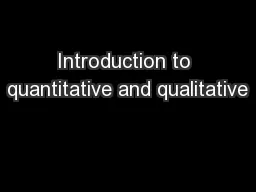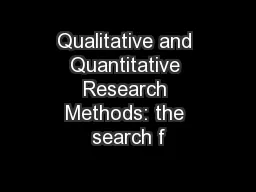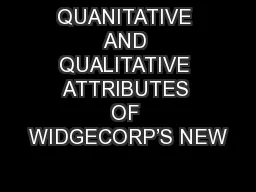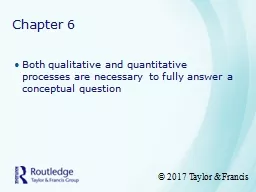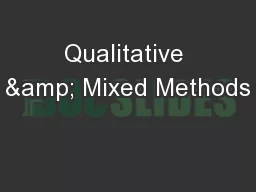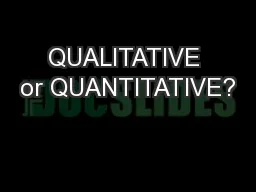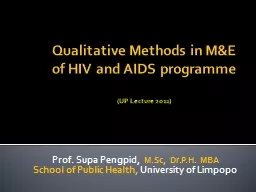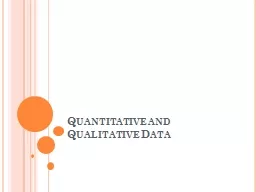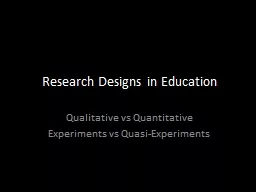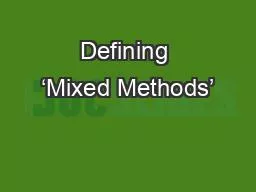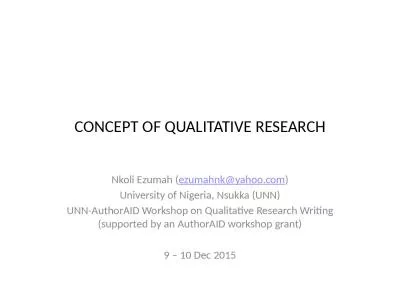PPT-Introduction to quantitative and qualitative
Author : luanne-stotts | Published Date : 2017-10-25
research Dr Liz FitzGerald Institute of Educational Technology Research and research methods Research methods are split broadly into quantitative and qualitative
Presentation Embed Code
Download Presentation
Download Presentation The PPT/PDF document "Introduction to quantitative and qualita..." is the property of its rightful owner. Permission is granted to download and print the materials on this website for personal, non-commercial use only, and to display it on your personal computer provided you do not modify the materials and that you retain all copyright notices contained in the materials. By downloading content from our website, you accept the terms of this agreement.
Introduction to quantitative and qualitative: Transcript
Download Rules Of Document
"Introduction to quantitative and qualitative"The content belongs to its owner. You may download and print it for personal use, without modification, and keep all copyright notices. By downloading, you agree to these terms.
Related Documents

